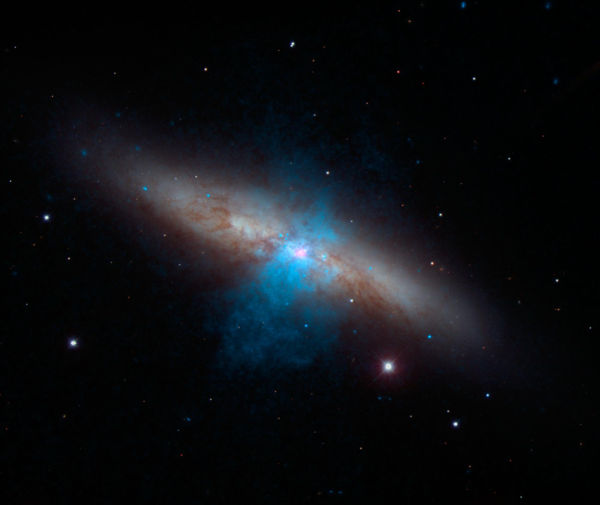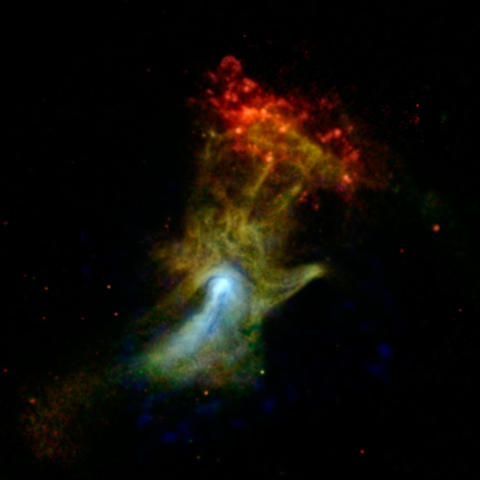
This composite, multi-spectrum picture of the Cigar galaxy (M82) includes images taken under the visible light spectrum by the National Optical Astronomy Observatory’s 2.1-meter telescope at Kitt Peak in Arizona and in the x-ray spectrum by NuSTAR and the Chandra X-ray Observatory. The magenta coloured center represents high-energy x-rays streaming from a rare and brightest to date pulsar which is also known as an ultraluminous x-ray source, or ULX.
Low-energy x-ray data from NASA’s Chandra X-ray Observatory are coloured blue while the higher-energy x-ray data from NuSTAR is the pink areas of the image. NASA’s NuSTAR mission spotted some pulsing x-rays from this ULX (called M82 X-2) leading scientists to discover this pulsar (a pulsar is a type of neutron star that sends out rotating beams of high-energy radiation).

